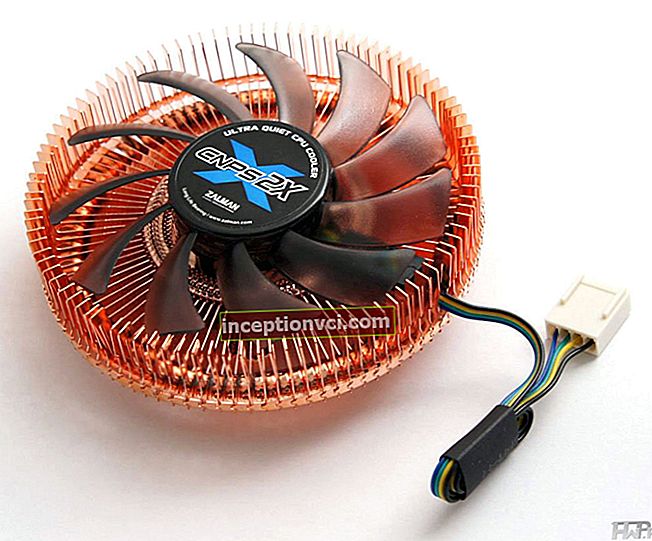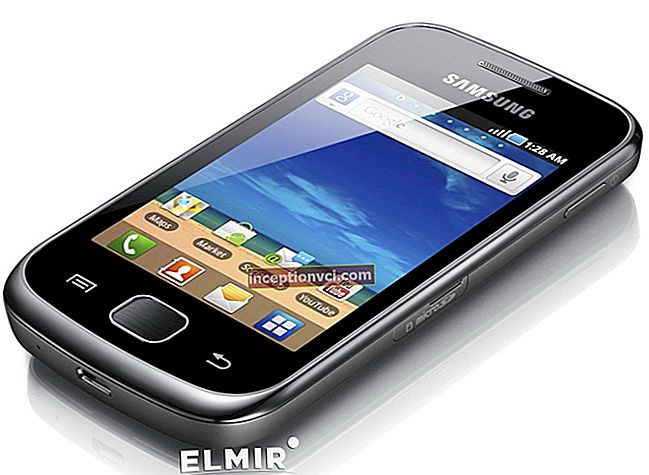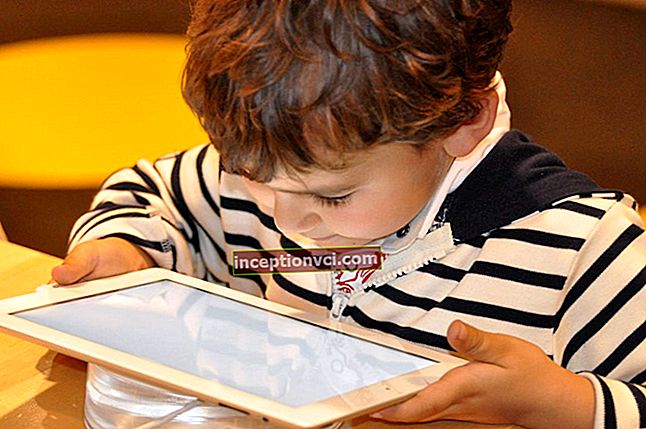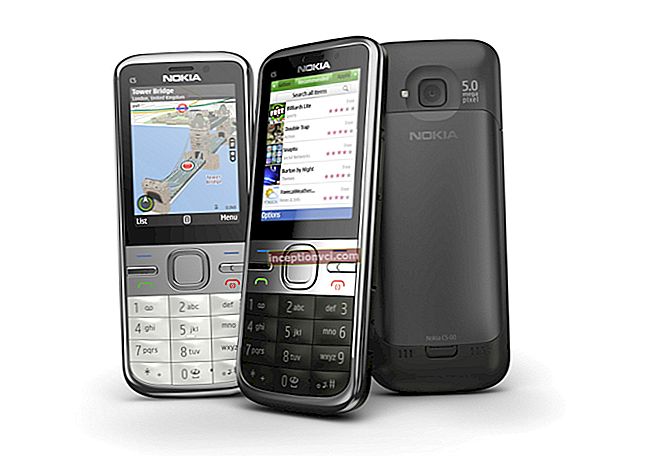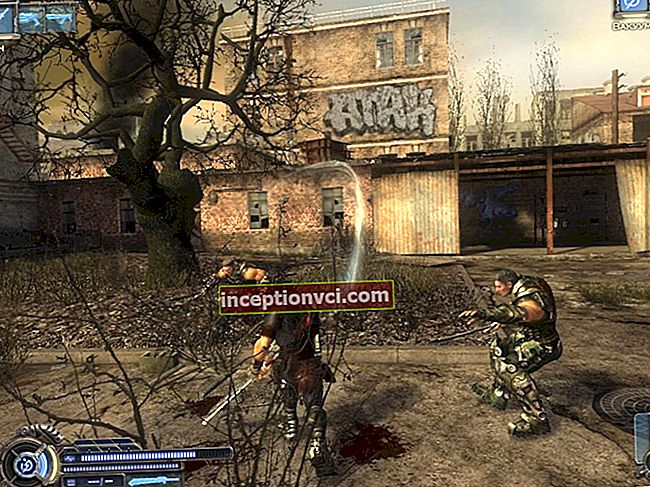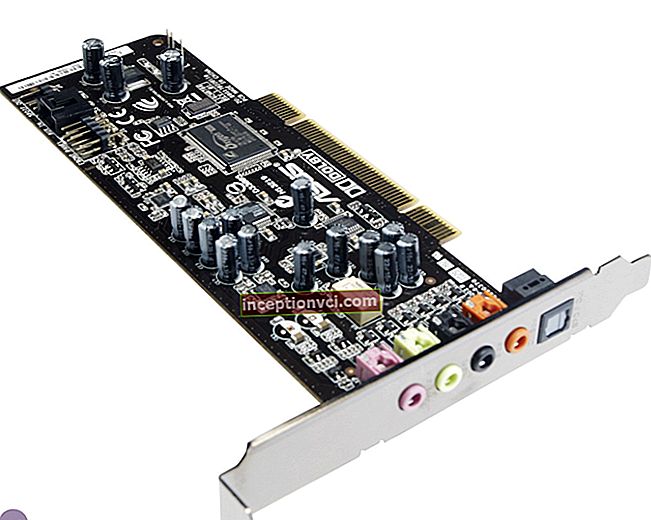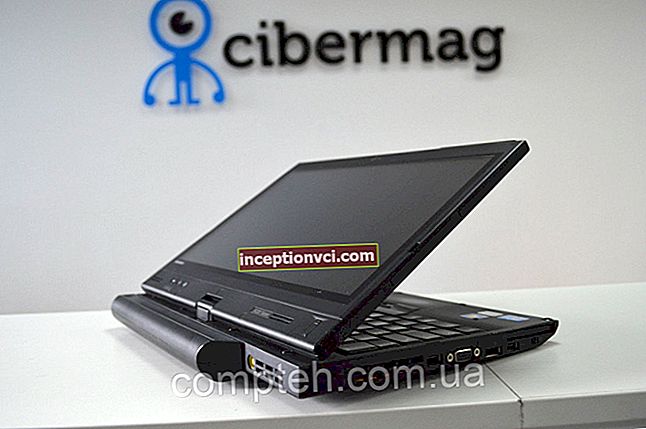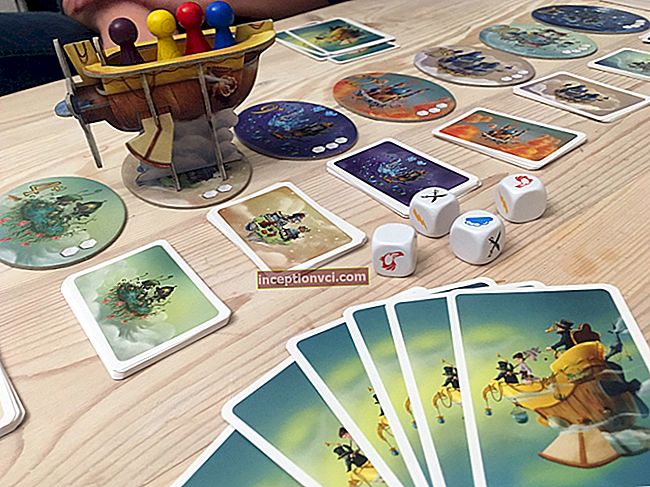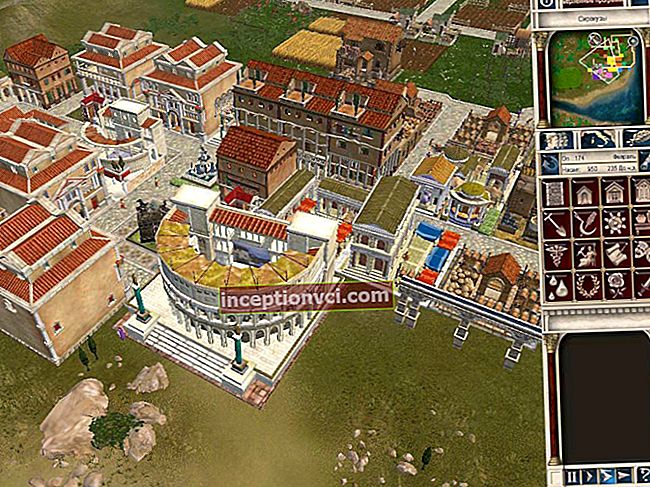Not so long ago, the word "smartphone" in our minds characterized something quite voluminous, having the functions of a telephone, but hardly fits in the pockets of clothes. Further, the products of the company were presented Nokia (Symbian 9, Series 60) E50, E51 - small, compact sizes, as for the devices on the UIQ platform, their sizes were still a bit larger. The overwhelming majority of devices based on the UIQ operating system were created by the manufacturer SONYERICSSON. For example, such well-known devices are M600, W950, P1i, each of which has an extended keyboard unit in its design, and in addition, a sensitive screen, which is why these devices turned out to be quite wide. As a result, the developer abandoned such a keyboard in favor of the classic arrangement of the keys, but at the same time left the sensitive display on new devices. Today we will take a closer look at the SONYERICSSON G700, a small smartphone based on the UIQ platform, equipped with a sensitive screen and a classic keyboard form factor.
Device appearance
As already mentioned, the handset turned out to be quite compact, when compared to the not very large E51, you can see that the G700 is somewhat wider, however, it is shorter in length, and besides, it is slightly wider in depth. The phone has the following dimensions: 106 * 49 * 13 millimeters, and its weight is 99 grams. The phone is made in monoblock form-factor, it has an internal antenna. At first glance, it is difficult to say that the smartphone was equipped with a touchscreen, since its appearance is not too different from the one generally accepted for conventional SonyEricsson models. The phone is made of plastic. According to the manufacturer, the phone will go on sale in one color design - Silk Bronze (silk bronze). As for the plastic itself, the entire back of the phone was made of corrugated bronze-colored plastic. The front side of the panel in the outline of the screen and the keypad has the same colors, but as for the perimeter and call control keys, their plastic has a black color, which stands out pleasantly from the whole layout. The overall impression of the color is good, it is not provocative, however, such a performance is more likely to be an amateur, since the basic color lacks rigor, but at the same time there is not enough brightness and vividness to the colors.

All elements of the phone are arranged in the spirit of the company's traditions. The upper part of the front panel is intended for placing a camera on it, which will be useful during video conferences; there is also a slot for the main (spoken) speaker. A little below is a large screen. The display is based on a TFT matrix with a resolution of 240 * 300 pixels, which supports 262,144 tones and colors. The display on the G700's display is crisp, vivid and vibrant. The color rendition is natural, the display of the picture is clear, the viewing angles are good, and the brightness has a fair amount. Among the negative features of the screen is not impeccable behavior in the sun, although in general the image, despite fading, remains readable, although it loses a lot in quality.


A block of keys is located under the display. The manufacturer has divided the keyboard into control buttons and alphanumeric keys, both by distance and by color, which has a positive effect on the control of the phone as a whole. The control keys are represented by the contextual back and cancel buttons, each of the pairs of these buttons surrounds the keys responsible for calling notes and mail, these buttons are silver colored with corresponding icons. In the center of the monoblock there is a rounded four-way control key, in the center of which there is an action confirmation button.Despite its own small size, the four-way key is comfortable, but it requires a little practice of use, so that you fully master the controls.


As for the alphanumeric block, it is represented by three columns of four buttons each. Decent spacing has been made between the columns, but at the same time, in each of the columns, the buttons are quite tightly adjacent to one another. Despite this drawback, due to the significant size of the buttons, erroneous pressing during operation is very unlikely. The buttons have a slightly curved shape, while the keys themselves protrude above the surface of the body, which, coupled with a soft stroke, provides a convenient use of the device. The designations are made in the same size, both for the Russian alphabet and for Latin characters, as for the numbers, they are located somewhat separately, on the left side of any of the buttons. The keys are illuminated with white light of moderate brightness, which does not blind the eye in the dark.

The controls and interfaces presented on the sides of the G700 smartphone are quite varied. On the left side there is a central locking key, as well as a standard proprietary interface connector (aka Fast Port), which is located much to the bottom edge. Under this interface, the manufacturer placed a slot for memory cards in the M2 format (quite expensive nowadays, microSD memory cards are more common). The slot is covered by a non-removable flap, and a recharging indicator is installed a little to the right. In the upper left corner of the case, there is a special compartment for the stylus. The tail of the stylus has a darker coloration compared to the body, which makes it immediately noticeable and you don't have to search for a stylus for a long time. The stylus itself is too small, it has a very small size, so you need to get a handle on it so that its use is comfortable. The components of the pen are traditional - the body is thin, made of metal, the tip and tail are made of plastic.

The right side has several control keys. First of all, it is a combined volume control rocker located in the upper part, and in addition, the camera start button (release of its shutter) is located closer to the lower part of the body. It should be noted that all the keys on the sides are small and elongated, which is rather a plus in terms of preventing accidental pressing, but this is a significant shortcoming in ergonomics.
The lower part of the phone is equipped with a small-sized microphone slot; the manufacturer has not placed any other elements here. There is also no abundance of function keys on the top end - there is only one button responsible for power management.

The back of the G700 smartphone has a camera lens slightly recessed into the body, as well as a flash at the top, and a battery compartment cover and an external speaker at the bottom of the body. Let's dwell on the camera in more detail a little further. The battery compartment lid occupies almost the entire rear part of the product, the fastening of the lid is made up of impressive projections. Four protrusions are at the top, two are on the sides, and four more are at the bottom. At the same time, in order to remove the battery, you first need to pry off the cover in the lower part with your fingernail, and then, using force, pull it up (you do not need to move the cover, as is often the case). Under the back cover there is a recess with a battery and a SIM card placed in it, which this very battery fixes. Thus, to remove the battery, you need to use the recess located on top, you need to pry it off with your fingernail, after which it becomes possible to remove the battery. The SIM card is approximately 2/3 recessed into the body.
User interface
The G700 smartphone has a desktop that has many similarities to the desktops of previous models: at the top there is a service line showing the quality of signal reception, as well as the level of the remaining battery charge, and besides, some currently active applications and settings. In addition, at the edge of the menu on both sides is the so-called task manager, which is responsible for the function of quick access to the most important features of the phone. He is also responsible for the last running applications, as well as for accessing the list of functions responsible for creating new messages, contacts, tasks and other functions that are combined with the communications manager, sound settings and keypad lock, in the drop-down menu, respectively.



Further we will dwell in more detail on the smartphone menu, in it we will see the name of the operator, as well as a drop-down list of main events (such as mail, calendar notes, log of incoming and missed calls, list of tasks). The bottom line is used to display contextual keys. Slightly above them there are large icons for quick access to various applications, their initial number is five, although the list can be expanded to fill the entire display and assign up to 15 icons. Above the list of icons there is a field with hours and current date. Regarding the desktop, it should be said that it is not very overloaded with objects, everything looks quite laconic and thoughtful. When the phone is idle, applications are minimized, and this also happens in standby mode. In addition, it is possible to choose one of 3 options for displaying the menu, for example, the option with vertical scrolling of the main items.
The main menu is an ordinary grid of nine icons (3 * 3), and besides, it can be a vertical list of all kinds of sub-items. In sub-clauses, information is also presented in the form of lists. It should be noted that in each of the menu sub-items, as well as in the main menu, the top line remains constant, as well as on the main screen, the buttons of the context menu are displayed in the same way. The icons are drawn well enough, therefore, even with not too large screen dimensions, they can be distinguished quite well even without explanatory prompts to the right of the icons.
As for the speed of work, in this parameter the mobile phone of stars from the sky is not enough, quite often the device slows down, although mostly it works rather fluently. It is hoped that these shortcomings are caused by the imperfection of the operating system and will be corrected in the future. The number is dialed according to the usual scheme for Sony Ericksons; it can be called both from the context menu and while dialing the subscriber's phone number. The dialing field is also completely ordinary, it is a white rectangle in which the entered numbers are displayed.
Phonebook functionality
The list of contacts is a vertically displayed list of subscribers, sorted in alphabetical order. During the first start-up, you will be prompted to transfer numbers from the SIM card memory to the smartphone memory, since there is no implemented function of simultaneous viewing. If you hover the cursor over a contact, the field will display the number (the first one that was recorded). If you create a new contact, you will be prompted to fill in the following information:
- Subscriber's name
- Subscriber's surname
- Telephone number
- City phone number
- E-mail of the subscriber
- The contact's next tab is called "info":
- Subscriber's position
- The company where the subscriber works
- Subscriber's date of birth
- Home address
- Place of residence
- Postal code
Further there are fields of notes and voice commands, as well as a sound signal. There is no need to worry about the fact that there are not very many fields for entering records, because these are only the values initially displayed in the phone, then it is possible to add an almost unlimited number of very different information for each contact.Initially, there will be no grouping of users, you will need to do these groups on your own, and there will be no obstacles to renaming or selecting any of the subscribers in these groups. You will be able to set the speed dial function for nine contacts, surprisingly this function is not displayed in the notebook.
Go to the call lists is possible both by pressing the left contextual button of the display, and directly from the menu. There are four dedicated tabs, each containing a corresponding list. The first one is a single list of calls, then incoming calls, then outgoing calls, and then missed calls are located. If you hover the cursor over the number, the phone displays the date, as well as the time when the call was made. In the properties it is possible to look at the duration of the call, if the dialogue has already been made. Similar numbers are not grouped, because the information in the lists is not just complete, but even a little excessive, although there is a function that groups numbers throughout the day, or shows the complete list with all calls to the maximum extent possible.
Messages submenu
This sub-item provides access to voice mail, as well as create new messages - this sub-item is located at the top. The main area is given over to directories of incoming messages and letters sent to the email address. When creating a new message, the phone will prompt you to select its type: sms, mms or e-mail, after which you can already start creating a message. As for text messages, everything is standard here, the top line is intended for entering the final addressee, at the bottom there is a field for entering information. To write a message for e-mail or mms, you must select them, after which the tabs with setting up message copies, priority and other items will also be available. You can write messages with the G700 without any problems, the menu for this was created simple and understandable for everyone.
It is worth talking a little more about the methods of entering text and signs. There are two options for entering information into the phone - this is an ordinary keyboard input via hard keys and input via a virtual QWERTY keyboard using a stylus directly from the screen. Moreover, the mode of drawing characters with their subsequent recognition is implemented. In the latter version, you need to practice a little to write recognizable information, in the second one you need good eyesight, since the sizes of the virtual keys are quite small, it is also good that the bundle includes a convenient stylus with which you can select the necessary buttons, with fingers it would be a real torment. All this makes it easy to enter text using your G700 smartphone, in addition, there is a wide range of methods for entering information, so you can choose the one that suits you best.
All messages are saved in one folder, both multimedia and regular. In addition, files received via wireless protocols are automatically entered into this folder, with the only difference that a corresponding icon is displayed next to the text, which differs from ordinary messages. A separate folder will be created for emails from any of the contacts. As for the setting, for any type it is traditionally hidden in the main window of the view, and is located under the right contextual display. There is also a function that increases the size of the text (three options: small, medium and large). To set up a mail client you will need at most a couple of minutes, of course, provided that you know the addresses of the incoming and outgoing server.
Office functions
These items can include a few applications that were initially located in different menu tabs. Applications such as a calendar that initially displays information about a given month are immediately striking.The start of the description of a new event will first of all begin by choosing the type of this event (it can be meetings, reminders, events of the whole day or anniversaries), then you need to select the date, place, time, parameters of the event notification. If during the creation of the list of subscribers the date of birth of the subscriber was specified, this date will be automatically added to the calendar as an event.



The calculator has a fairly wide functionality. You can enter numbers and perform actions using the same stylus. In addition to the standard options, arithmetic operations for determining percent, square root, and memory functions are supported. Convenient to copy and paste. The calculator is really good, it is quite capable of replacing a regular calculator.
There is a built-in program for converting various quantities, it can convert the following quantities:
Distance (length)
Volume
Weight
Temperature
Speed
Area
Currency
Also the standard application is a stopwatch. Its interface is simple, at the same time it supports up to ten circles. The time is displayed in the center of the display, a little below there are tabs containing data about the time of any of the laps. The stopwatch came out approximately the same in simplicity, you need to set the time before the signal, in the format, "h: m: s", after which you can safely go into standby mode and at the right time the device will signal you.
A few words about the built-in alarm clock, it is part of the "time" application. In addition to the ability to configure the time parameters of a given moment, a special application "time" has been made. After the home parameters have been selected - city, time zone, it is possible to add such a parameter as "interested" time zones. This function will help you in travel. You can select the display item using the left contextual key, which will also allow you to control There are as many as 3 alarms in the phone and from the very beginning they have the setting for morning, lunch and evening (the corresponding time values are 08.00, 12.30 and 21.00) During editing, it is possible to make any of the alarms active, set the activation periods (1 time , every day, only on weekdays or every week), as well as the alarm melody and the message issued at the same time.
The note service includes text files that were typed using keyboards or written on the screen. A nice feature is their display in the form of stickers in a slightly reduced form, which looks great. This service is in demand and convenient, reminders in this form are well received.
The task service has also been a standalone application for a long time. While editing the next task, you can fill in the following items of the application with data:
- Intelligence
- Completion of the task
- Task priority ("1", "2", "3")
- Start and end date
- Signal
- Folder
In addition to all this, the manufacturer has installed specialized software in the product for working with office documents. It's Quickoffice for text files and PDF + for Acrobat files. Of course, these are very useful applications, both in business and work, and for an ordinary student during exams.
The smartphone has a fairly advanced, and at the same time, easy-to-use file manager. The interface of this manager is simple, but quite informative. There is support for all basic editing functions such as transferring files, copying, renaming and others.
Use of Internet resources
The product is preinstalled with a portable version of the Opera internet browser for the Symbian operating system. The application has the typical features of the browser of this particular manufacturer, here are some of these functions:
- Multiple window viewing supported
- Bookmarks
- Move options (reload, go to the start or end of the page)
- Saving and browsing web pages
- Browsing history
- Uploads
- Scaling (20-200%)
- Loading and disabling pictures
- Java
- Internet cache
- Cookies
- Pop-up blocking
Smartphone communication capabilities The G700 supports the following mobile standards: UMTS 2100, GSM 900/1800/1900. This list is quite enough for most of the users. GPRS support is also available, but, unfortunately, EDGE support is not implemented, then the phone would have a full set of communications, except for WiFi. The wired communication medium is a USB cable. There is only one wireless technology for data transmission - this is Bluetooth version 2.0 + EDR, which has much more information content than previous versions of the protocol. First, you will be prompted to select the name of the device, after which you will need to activate Bluetooth, select the visibility options for other devices, and then turn on the economy mode. Then there are 2 tabs that include a complete list of connected devices, a separate list tells about the connected audio devices. For the test, we used another smartphone, a communicator, as well as a pair of wireless headsets; in all cases, no connection problems were found. The data transfer was correct and fast. The A2DP profile worked correctly when the phone was synchronized with the Plantronics Pulsar 590e headset. Moreover, there is support for the following profiles: File Transfer Dial-up Networking Handsfree Headset Generic Access Generic Object Exchange Basic Imaging Object Push A2DP Serial Port Audio | Video Remote Control Phonebook Access HID JSR-82 Java API Object Push Personal Area Networking Synchronization SYNCML OBEX binding Multimedia options Multimedia services are mostly very similar to those found in various gaming platforms, Sony. There is a vertically oriented list of all sorts of components, in each of them you can go to a level further. Pretty good implementation. Your phone's media player makes all the audio content on your phone available. The information is sorted by such indicators as artist, album, track, playlist, in addition, there is access to audiobooks and podcasts. Recently recorded music files will not be found until you scan the file system, after which the mobile phone will find the song. The player settings allow you to select such playback parameters as random play, repeat songs, adjust the equalizer (11 preset settings). As for the interface, everything is very simple and straightforward. The radio receiver, as in most of similar devices, functions only if you connect a wired headset, which serves as an antenna. Among the options of the radio receiver is the memorization of up to 20 arbitrary stations, while scrolling the frequency range can be done either with your hands or with the help of automatic search. Another function is a voice recorder. After recording the speech, the files are saved, and then they are visible as a list at the bottom of the display. Another playback and recording option is TRACKID. This function allows you to record a small piece of a melody, and then transfer this melody to the Internet to obtain information about the artist. Quite a useful option if you have heard a familiar melody, but you cannot remember the author. MUSICDJ allows you to create your own melody from various pieces that are saved in the application. The program has four audio tracks, so you can compose compositions from a variety of instruments. After creating a melody, you can use it as a ringtone. Game Java applications The manufacturer installed a couple of Java-based toys in the smartphone. This is a Sudoku puzzle as well as the popular Sims 2 simulation game in mobile only. Thanks to the UIQ operating system, Java support is quite complete, so you will not have any drawbacks in games and other applications. Camera in the phone After downloading the application responsible for the camera, the device screen becomes a viewfinder.Along the sides of the screen are various controls for all of the camera's settings. As for the camera interface, it came out a bit boring and austere, although the camera does not need a lively color scheme. In general, it differs little from the appearance of the camera application for other models of the manufacturer. Camera parameters - 3.2 megapixels, LED dual flash, the lack of autofocus is not encouraging. The camera has the following settings: Unfortunately, due to the lack of autofocus, images are blurry and noisy. Even at 3 megapixels, the footage comes out pretty mediocre. The shooting mode "at infinity" in normal lighting is not bad, but as for macro photography, it is generally unsuccessful. Summary of the review Of the 12 hours declared by the manufacturer in dialogue mode or 380 hours in standby mode, it actually turns out 2-2.5 days of operation without recharging with a low load (this is about an hour of negotiations per day, a couple of sent sms, several pictures with a camera and testing capabilities). In this regard, the phone has good parameters. In terms of volume, the call signal is a little less than perfect, the same situation is with the vibration signal. The advantages of the device can also be attributed to the earpiece and the microphone. In terms of the level and quality of signal reception, the G700 is comparable to its counterparts in the manufacturer, sometimes, of course, there is a loss of signal, especially at underground transport stations. Summing up, it should be said that the G700 has a fairly good touchscreen display in terms of sensitivity. Among the disadvantages of the phone is a mediocre processor, as a result of which the phone slows down a little, especially in resource-intensive applications. In addition, according to the current trend, the presence of a GPS receiver is by no means an important criterion, but WiFi and EDGE are not so superfluous in a modern smartphone. If we compare the device with previous models, then it is undoubtedly in a privileged position, although it is very far from the excellent G700 smartphone. Despite this, due to the low cost, this device, of course, will find its buyer, even in spite of the low popularity of the operating system. You can always buy this smartphone in the F.ua Internet multimarket.

